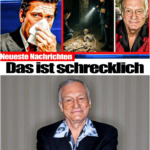In the high-stakes, technologically supercharged world of Formula 1, innovation is the currency of champions. Teams pour hundreds of millions of dollars into finding the slightest edge, a fraction of a second that separates victory from defeat. Yet, history is littered with radical ideas that were too bold, too dangerous, or simply too strange to survive. None, however, had a shorter, more spectacular, and more controversial life than the infamous “X-wings” of the late 1990s. For a fleeting moment, they were the future, a bizarre but effective piece of engineering that looked more like television aerials than high-performance aerodynamics. Then, just as quickly as they appeared, they were gone, banned into oblivion and leaving a legacy that still fascinates fans today.

The story of the X-wings begins with a problem. The 1998 Formula 1 season was defined by a sweeping set of new regulations designed to slow the cars down. In a bid to increase safety and promote closer racing, the FIA, the sport’s governing body, mandated narrower cars and, most critically, the introduction of grooved tires. This was a seismic shift. For years, F1 cars had relied on wide, slick tires that provided immense mechanical grip, allowing drivers to carry incredible speeds through corners. The new grooved tires deliberately reduced this grip, forcing engineers to look elsewhere to reclaim the lost performance. The answer, as it so often is in F1, lay in aerodynamics.
With mechanical grip compromised, aerodynamic downforce became the holy grail. Downforce is the invisible hand that pushes the car onto the track, allowing it to corner faster and remain stable. Teams began a frantic search for any surface on the car where they could generate more of it. One team, however, was already a step ahead. Tyrrell, a legendary British outfit with a reputation for brilliant, often quirky, engineering, had spotted a loophole. The regulations were strict about bodywork height around most of the car, but there was a “gray zone” just above the side pods, on either side of the driver. In 1997, Tyrrell had already experimented with this area, mounting small, pylon-like wings in this space on their 025 car. It was a peculiar sight, but the logic was sound.
The air flowing over a Formula 1 car is incredibly complex and turbulent. The closer a wing is to the body of the car, the more it is affected by this “dirty air,” which reduces its efficiency. By mounting these small wings on tall pylons, Tyrrell’s engineers were lifting them into a stream of cleaner, undisturbed air. This allowed them to generate significant downforce with a minimal penalty in terms of drag—the aerodynamic resistance that slows a car down on the straights. It was a clever, efficient solution.

When the 1998 season dawned, what Tyrrell had started as a curious experiment began to catch on. As other teams grappled with the new regulations, they saw the genius in Tyrrell’s design. Soon, teams like Jordan, Prost, and Sauber arrived at races with their own versions of these high-mounted wings. Now dubbed “X-wings” for the way they crisscrossed over the car from certain angles, they were becoming a common sight in the paddock. They were, to put it mildly, visually jarring. Critics described them as looking like “scaffolding” or “coat hangers” bolted onto the sleek, million-dollar machines. They completely disrupted the aesthetic harmony of a Formula 1 car, but in a sport where speed is everything, beauty is a secondary concern. And these ugly wings were undeniably fast.
The true turning point, the moment the X-wings went from a midfield curiosity to a championship contender’s weapon, came at the San Marino Grand Prix. Ferrari, the most famous name in motorsport, arrived with their own iteration of the X-wings fitted to the cars of Michael Schumacher and Eddie Irvine. If Ferrari was using them, the concept was no longer a gimmick; it was a serious performance advantage. The move paid off spectacularly. Schumacher and Irvine dominated the weekend, securing a one-two finish for the Scuderia. The X-wings had received their ultimate validation on the sport’s biggest stage. Suddenly, every team on the grid was scrambling to develop their own versions.
However, the rapid rise of the X-wings was matched by a growing chorus of concerns. The first issues were practical. During frantic pit stops, mechanics found the towering pylons incredibly cumbersome. They were a constant obstacle, making it difficult to refuel the car and change tires. Air guns and other equipment were easily snagged on the delicate structures, costing precious seconds and increasing the risk of a botched pit stop.

More alarmingly, serious safety questions began to be raised. The wings were mounted on thin, carbon-fiber pylons that were strong enough to handle aerodynamic loads but were worryingly fragile in a crash. The fear was that in an accident, these pylons could shatter into sharp, dangerous debris, posing a threat to drivers, marshals, and even spectators. Furthermore, their position high above the cockpit was a major concern for driver extraction. In a serious incident where a driver needed to be quickly and safely removed from the car, the X-wings presented a significant physical barrier to medical crews.
Finally, there was the issue of aesthetics. The FIA, and its then-president Max Mosley, were deeply concerned about the image of Formula 1. They believed the sport should represent the absolute pinnacle of automotive design and engineering—a fusion of speed and beauty. The X-wings, with their ungainly and improvised look, flew in the face of this ideal. They made the cars look messy and awkward. The fear was that if this trend continued, F1 cars could evolve into monstrous collections of bizarre and unsightly wings, alienating fans and devaluing the brand.
The combination of these factors—pit stop chaos, grave safety risks, and aesthetic objections—created a perfect storm. The FIA decided to act, and they did so with ruthless speed. Ahead of the Spanish Grand Prix, just four races after Ferrari’s dominant victory had made them the must-have accessory, a technical directive was issued. The governing body used its power to mandate new rules on safety grounds, effectively banning the X-wings overnight. They imposed a strict height restriction on any bodywork in the central section of the car, closing the regulatory loophole that Tyrrell had so cleverly exploited.
The teams were forced to saw the wings off their cars. The X-wing era was over as suddenly as it had begun. It remains one of the shortest-lived design trends in modern F1 history, a fascinating footnote in the sport’s relentless pursuit of speed. Yet, their legacy is significant. They stand as a powerful reminder of the constant tug-of-war between innovation, regulation, and safety. The X-wings showed just how far engineers would go if left unchecked, and their ban led directly to the more prescriptive and tightly controlled aerodynamic regulations that shape the cars we see today. They were ugly, they were controversial, and they were dangerous. But for a few brief, brilliant weeks, they were also the fastest things on the track.
News
Die Sprache der Liebe: Wie Bushido und Anna-Maria Ferchichi ihre 15-jährige Ehe in der Paartherapie retteten – Das emotionale Geständnis der „Liebessprachen“-Krise
Die Ehe von Bushido und Anna-Maria Ferchichi gehört seit Jahren zu den am meisten beachteten Partnerschaften der deutschen Öffentlichkeit. Sie…
Tanzwunder im siebten Monat: Renata Lusin tanzt hochschwanger! Das emotionale Comeback und die bewegende Geschichte des “Campingbabys”.
Die Nachricht schlug in der deutschen Medienlandschaft ein wie ein funkelnder Diskokugel-Blitz: Renata Lusin, die charismatische und stets energiegeladene Profitänzerin,…
Antonia Hemmer enthüllt das bestgehütete Geheimnis: „Er ist derjenige, für den ich gebetet habe“ – Ein Beweis von Liebe, Schutz und Selbstbestimmung
Es war ein einziger digitaler Atemzug, der die gesamte Reality-TV-Welt in ihren Bann zog und die Gerüchteküche zum Überkochen brachte….
Schock-Nachricht beim TV-Comeback: Helene Fischer kündigt Mega-Pause für ihre große Stadion-Tour an!
Die Schlagzeilen über Helene Fischer sind meist ein Spiegelbild von Superlativen: Rekorde, ausverkaufte Stadien, atemberaubende Spektakel. Doch nach der Geburt…
Anna Heiser: „Was sich wie ein Ende anfühlte, war unsere Rettung“ – Die dramatische Wahrheit hinter Ehekrise, Existenzangst und dem radikalen Neuanfang
Wenn Anna Heiser (35) heute mit ihrem Mann Gerald und ihren Kindern Leon (4) und Alina (3) glücklich um den…
Zwischen Blitz-Einsatz und Glamour-Verwandlung: Katja Burkards ungeschminkter Sprint zur Rettung der RTL-Show Denn sie wissen nicht, was passiert
Der Samstagabend ist in der deutschen Fernsehlandschaft traditionell die Hochburg der großen Unterhaltung, der Ort, an dem sich TV-Ikonen in…
End of content
No more pages to load











